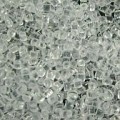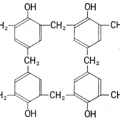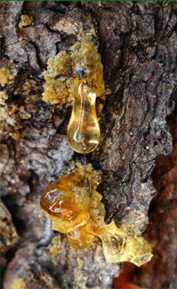
합성 수지
옛날에는 수지樹脂는 말 그대로 ‘나무樹의 “지방”(=脂)’, 즉 소나무 야니 나 옻칠 등과 같이 수액이 굳어진 것을 의미했습니다.
영어 resin도 독일어 harz도 “소나무 야니 ‘의 의미가 원래의 의미에서 사람이 만든 합성 수지의 경우 (synthetic resin)로 표기되어 있습니다.
1881 년에 도쿄 화 학회 (현 공익 사단 법인 일본 화 학회)보다 “化學 譯語 集”이 간행되어 그 때부터 새로운 화학 물질의 의미로 보급되기 시작한 것 같습니다.
1897 년에는 化學工業全書제 7 권에 “임시 옻칠 : 수지樹脂 오일 : 안료 : 페인트 / 다카마쓰 토요 키치 편찬”이 南江堂에서 출판되어 있습니다.
플라스틱
영어 차용어 플라스틱 plastic은 원래 그리스어로 소조이라는 의미를 갖는다 Πλαστικός라는 단어에서 유래하고 있습니다.
소조와 점토 등의 부드러운 소재로 동상 등을 만드는 것입니다.
그것을 라틴어가 차용하고 plasticus되고, 또한 영어를 차용하고 plastic되었습니다.
필름, 도료 및 접착제도 그 사용 형태에에서 플라스틱으로 간주되고 있습니다.
재료가 수지 (resin)에서 완제품 (몰딩)가 플라스틱이라는 위치는 함께 어감이지만, 미국에서는 플라스틱의 원료는 목재, 석탄, 석유, 식물체, 야채 주스, 단백질과 뭐든지 개미에서 합성 수지 아닙니다. 바로 “소조 품”입니다.
고분자 화합물의 분류
범용 수지와 엔지니어 플라스틱과 슈퍼 엔지니어링 플라스틱은 내열성을 나타내는 척도로서 하중 굴곡 온도 (DTUL)로 구분됩니다.
DTUL가 100 ℃ 이상의 수지가 엔지니어 플라스틱입니다.
DTUL가 150 ℃ 이상의 수지가 슈퍼 엔지니어 플라스틱입니다.
합성 고분자 합성 수지, 합성 섬유, 합성 고무와 같이 분류 될 수 있습니다.
합성수지 및 합성 섬유 제품의 형상으로 구분 합성수지 및 합성 고무 제품의 탄성으로 구분됩니다.
고분자 폴리머
합성 수지는 고분자 화합물의 일종입니다.
고분자는 저분자와는 다른 특이한 성질을 가지고 있으며 특히 고체와 용액의 역학적 열역학적 특성은 크게 다릅니다.
에틸렌 500 개가 연결된 폴리에틸렌 (탄소수 1000)의 중합도는 500입니다.
중합도가 커지면서 더 딱딱 더 강한 수지가됩니다.
폴리에틸렌은 열을 가하면 녹아 유동하기 때문에 그 상태로 성형합니다.
유동 시작 온도 (융점)은 분자량이 커질수록 높아집니다.
분자량이 일정 이상 커지면 열을 가하지도 유동하지 않고 더욱 온도를 올리면 분해합니다.
예를 들어, 폴리에틸렌은 탄소 2 개의 에틸렌을 다수 잡은 합체이며,이 경우 에틸렌은 “모노머”라고 폴리에틸렌는 “폴리머”라고합니다.
「모노」은 하나 “폴리”는 많은 의미하는 접두사이다. 모노머를 연결해가는 반응을 중합 반응이라고 단량체가 연결되어있는 개수를 중합도라고합니다.
고분자 (macromolecule)은 저 분자량 화합물 (low molecule weight compound)이 반복 이어졌다 (중합 한) 것들 중, 분자량이 1 만 이상의 화합물을 말합니다.
합성 수지뿐만 아니라 천연 소재도 포함되어 있습니다.
모노 (mono)는 “하나”를 의미하는 그리스어에서 유래 한 말로, 모노머 (monomer)는 “단량체”라고 번역됩니다.
폴리 (poly)는 “많이”를 의미하는 그리스어에서 유래 한 말로, 폴리머 (polymer)는 “중합체”라고 번역됩니다.
호모 (home)은 ‘동질’을 뜻하는 그리스어에서 유래 한 말로, 호모 폴리머 (homopolymer)는 “단독 중합체”라고 번역됩니다.
코 (co)는 “함께”를 의미하는 라틴어에서 유래 한 말로, 코 폴리머 (copolymer)는 “공중 합체 또는 이원 공중 합체”라고 번역됩니다.
광의의 폴리머 (polymer)는 모노머 (monomer)가 2 개 이상 연결된 중합체를 말합니다.
협의의 폴리머는 분자량이 1 만 이상의 높은 중합체를 말하며, 고분자와 거의 같은 의미로 사용되고 있습니다.
폴리머라는 범위는 합성 수지에 한정되는 것 같습니다.
비교적 소수의 모노머가 결합한 중합체의 것을 올리고머 (oligomer)라고합니다.
모노머의 수에 따라 이합체 (dimer : 2량 체) 토라이마 (trimer : 3량 체) 테토라마 (tetramer : 4량체) 등으로 불리기도합니다.
1 종류의 모노머에서 할 것을 호모 폴리머 (homopolymer 단독 중합체)이라고합니다.
2 종류의 모노머에서 할 수있는 것을, 코 폴리머 (copolymer 공중 합체, 또는 이원 공중 합체)이라고합니다.
3 종류의 모노머에서 할 수있는 것을, 터 폴리머 (terpolymer 삼원 공중 합체)이라고합니다.
예를 들어, 자동차 인테리어에 많이 사용되는 ABS 수지 터 폴리머 (삼원 공중 합체)의 아크릴로 니트릴 – 부타디엔 – 스티렌 수지의 약칭으로 높은 강도와 내 충격성을 가지고 있습니다.
딱딱하지만 충격에 약하고 깨지기 쉬운 아크릴로 니트릴 수지와 스티렌 수지의 성능과 부드러 우면서도 충격에 강한 부타디엔 수지의 성능을 결합 강도와 내 충격성을 양립시키고 있습니다.

- 일반적인 호모 폴리머 (단독 중합체)
- 교대 공중 합체 – 두 종류의 모노머가 교대로 늘어선 공중합
- 랜덤 공중 – 모노머의 배열에 질서없는 공중합
- 주기적 공중 합체 – 두 종류의 모노머가 주기로 교대로 늘어선 공중 다른
- 블록 공중 – 동종 단량체가 길고 연속 공중합
- 그라프 트 공중 – 줄기가되는 공중합에 곳곳에 가지처럼 다른 중합체가 배열
다수의 원자를 공유 결합으로 연결 할 수있는 능력을 가진 원소가 골격 (주쇄)로 주로 탄소와 규소, 산소 등에 한정되어 있습니다.
탄소를 주쇄로 한 것은 유기 화합물, 탄소 이외의 것을 주쇄에있는 사람은 무기 고분자라고합니다.
고분자 재료
원유에서 증류에서 얻은 제품은 대부분이 저분자입니다.
석유 화학에서는 가솔린 동료 나프타 (C6 ~ C8)을 원료로하여 중합 한 합성수지를 만듭니다.
탄소의 결합과 기본적인 분자
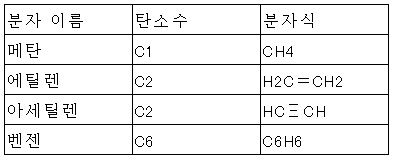
석유 제품의 평균 분자량
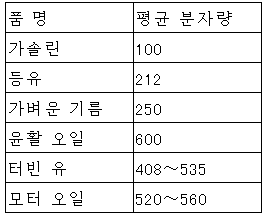
 HEAT-TECH 최선의 기술 온라인(on-line) 샵
HEAT-TECH 최선의 기술 온라인(on-line) 샵 




